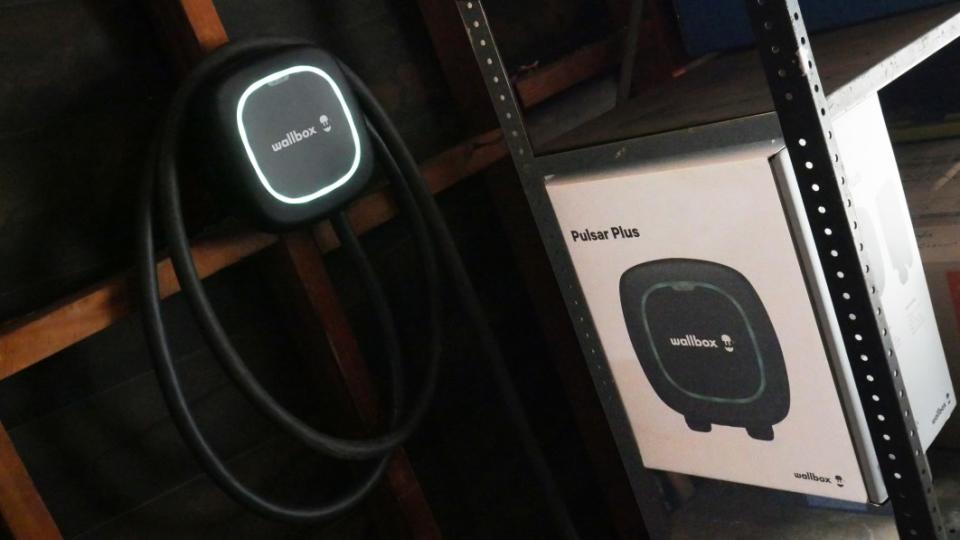Wallbox Pulsar Plus Long-Term Review: Sleek, feature-packed electric car charger

My household has owned an electric car for a little less than 14 months and we have driven it just over 10,000 miles. In that time, we haven’t used a public fast charging station once. Instead, we’ve been using a Wallbox Pulsar Plus Level 2 home charger that was installed at roughly the same time we bought our Kia Niro EV Wave.
In that time, the Wallbox has been flawless in its operation, and has delivered exactly as promised in terms of its performance and versatility. I have taken full advantage of its scheduling functionality to charge only during off-peak times or, more recently, when the sun has been shining on my home’s solar panels. Now, my solar system can’t produce anywhere close to the Wallbox’s maximum output of 48 amps, but that highlights another Wallbox advantage: It can throttle down its output to as low as 6 amps to equalize input/output and maximize solar use.
Other key parts of its appeal include a very long 25-foot charge cable that has made it easier to charge many different electrified vehicles with different charge port locations. The charger’s design is sleek and allows it to double as its own charge cord manager (wrap it around). The app is easy to use, and can operate the charger via WiFi or Bluetooth, although I honestly wouldn’t mind some level of control on the charger itself. Finally, there are multiple features that make it easier for those with limited power capacity or multiple EVs to charge.

The Pulsar Plus glows turquoise, as shown above, when in standby mode. It glows dark blue when charging and green when ready to charge, for instance, when plugged in but waiting for a scheduled sessions to begin.
Full disclosure
I did not pay for this Wallbox or its installation. The company reached out asking if Autoblog would be interested in testing a Pulsar Plus and we said yes. Of course, testing something that has to be bolted and wired into your house is a very different thing than testing a new car or roof carrier that can be sent back after a week. Paying someone to uninstall it just seemed silly, so it shall remain in my garage charging the Niro and future test cars.
Also, I must admit that this is the only EV home charger I’ve tested. Bolting and wiring six of them into my garage also seemed silly, so my comparative knowledge after a year is admittedly limited. I can only report what I found during testing of the Wallbox Pulsar Plus.
What we got: the Wallbox Pulsar Plus 48A
The Wallbox Pulsar Plus in question is a 48-amp model, although due to the limitations of my home’s electric panel, it can only manage 40 amps. That equates to 9.6 kilowatts – many electric cars have a 11-kW maximum. A few have less, such as the Nissan Ariya, and even fewer have more, such as the Lucid Air. Ultimately, the difference between charging at 40 and 48 amp would be a handful of miles recouped per hour.
That’s an important difference to note since Wallbox sells 40A and 48A versions of the Pulsar Plus, priced (at the time of this writing) at $599 and $699, respectively. This makes the Pulsar Plus a bit more expensive than other Level 2 chargers, but it’s also considered a “premium” choice. The 40A is offered as a hardwired version or one that can be plugged into a 240-volt outlet. The 48A is hardwire-only due to its higher output.
I personally would’ve purchased the 40A and had a 240-volt outlet installed since my house wasn’t capable of accommodating the 48A version anyway.


The sleek, pod-like Wallbox doubles as its own cord management solution. That's good, because it has a really long cord. The part that you plug the, um, plug into is separate from the charger as well and can be mounted wherever you want. This let me keep the charger inside, but holder outside. I really like this setup.
Final price and how it was installed
Wallbox arranged for COIL to install the Pulsar Plus. The process was very easy. I sent a few photos to a COIL representative, including of my electrical box, its location and where I was going to have the Wallbox installed. An electrician took a look at the pics and it was determined that installation was possible. COIL handled the permit process and arranged for the eventual building inspection.
The installation itself was handled in a day by a single technician who sure seemed to do an excellent job. My home wasn’t damaged and my electrical box was no worse for wear.
Final cost would have been $1,095 for installation, $550 for permits and inspections, and of course, $699 for the Pulsar Plus 48A.
It is possible that I could have qualified for federal and state tax rebates, but I didn’t actually buy the thing, so I didn’t.
Final cost of charger plus installation = $2,344


Extra-long, 25-foot cord let me plug in the Niro from both side of the driveway, plus inside the garage. With such a long cord, you don't have to worry so much about charger placement, or charge port placement of your car itself.
Using with the Niro
Interestingly, the Niro EV’s specs say that it is capable of Level 2 charging of 11 kW, but early last February, I found that maximizing the Pulsar Plus’ 40-amp (9.6 kW) output would cause some fault in the Niro that stopped it from charging.

 Yahoo Autos
Yahoo Autos 
